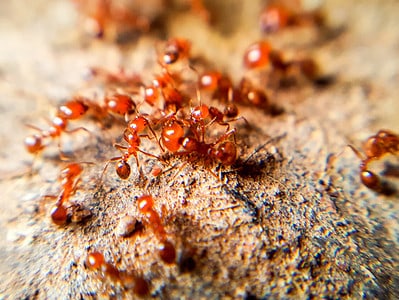Cucumber Beetle
Adults cucumber beetles cause the most damage to cucurbit plants.
Advertisement
Cucumber Beetle Scientific Classification
Read our Complete Guide to Classification of Animals.
Cucumber Beetle Conservation Status
Cucumber Beetle Facts
- Name Of Young
- Larvae
- Group Behavior
- Infestation
- Fun Fact
- Adults cucumber beetles cause the most damage to cucurbit plants.
- Most Distinctive Feature
- Yellowish-green body with black stripes or spots
- Incubation Period
- 6 to 9 days
- Habitat
- Cucurbit plants
- Predators
- Birds
- Diet
- Herbivore
- Lifestyle
- Diurnal
- Common Name
- Cucumber beetle
- Origin
- United States, Mexico, and Canada
View all of the Cucumber Beetle images!
Cucumber beetle is the blanket term for two types of beetle genera: spotted and striped cucumber beetles. These bugs are common pests to vine crops like pumpkin, cucumber, watermelon, and squash. They can cause significant damage to leaves, fruits, roots, and flowers, interfering with pollination and leading to reduced fruit production. Besides the destruction they cause to vine crops, they also carry and transmit disease-causing bacteria and viruses.
Cucumber Beetle Facts
- The cucumber beetle’s larvae feed on roots and underground portions of stems, but they don’t always affect the plant’s health.
- Adults cause the most damage to cucurbit plants
- Unfortunately, striped cucumber beetles transmit bacteria that kill cucurbit plants
Cucumber Beetle Species, Types, and Scientific Name
There are two types of cucumber beetles:
- Striped cucumber beetle (Acalymma vittatum)
- Spotted cucumber beetle (Diabrotica undecimpunctata howardi)
Both species occur in North America and are common pests in many states.
Appearance: How To Identify the Cucumber Beetle

Cucumber beetles measure around a quarter inch in length.
©Brett Hondow/Shutterstock.com
Common cucumber beetles will differ in appearance depending on the species. For example, both spotted and striped cucumber beetles grow to a quarter inch long and have black heads. But the spotted variety has a dozen black spots on their greenish-yellow wings. The striped variety has three black stripes running down their yellow-orange wings. Both beetles have long, slender antennae. Their larvae are worm-like and a creamy white color, with dark heads and tips. These larvae can measure 3/8 inches long and sport three pairs of legs in close proximity to their heads.
Habitat: Where to Find the Cucumber Beetle
Cucumber beetles are native to the United States, Canada, and Mexico. But, their biggest and most destructive populations occur along the southern states. However, they are not a problem in areas with sandy soil.
Diet: What Do Cucumber Beetles Eat?
These beetles survive off the following cucurbit plants:
- Cucumber
- Winter squashes
- Cantaloupe
- Pumpkin
- Summer squashes
- Gourd
- Watermelon
They are also known to eat corn, peanuts, potatoes, beans, and other crops. These beetles cause four types of damage:
- Flower and vegetation damage
- Seedling destruction
- Root damage
- Transmission of bacterial wilt disease
Adult beetles emerge as spring begins because they feed on cucurbits during their seedling stage. While these beetles feed on newly emerged cotyledons and stems, they also burrow underground to eat the plants as they start to grow. Female cucumber beetles will lay their eggs in the soil near seedlings, and once the larvae hatch, they feed off the host plant’s roots, tunneling through them and creating holes. However, the larvae don’t cause much damage, except in dry conditions where the root damage restricts the plant’s water uptake.
First-generation adults will appear in late June to early July, where they will live off flowers and foliage. While their damage to vegetation is minor, they cause severe destruction to flowers, often resulting in poor fruit harvests.
Second-generation adults emerge in September and October. These beetles will seek out rinds of winter squashes and pumpkins in the fall.
Cucumber Beetle Lifecycle
Adult cucumber beetles will overwinter in debris around buildings, woodlands, or under leaves. Adults will emerge in late March. In addition, females will lay their eggs from April to early June.
Eggs
As soon as adults emerge during mid-spring, they immediately start looking for host plants to feed off and deposit their eggs. Females will deposit their eggs throughout a field. These eggs incubate for six to nine days but can take up to a month in colder conditions. They lay oval-shaped yellow eggs in clusters of 25 to 50, each measuring around 0.03 inches long and 0.02 inches wide. Female cucumber beetles will deposit their eggs in soil crevices or close to the base of cucurbit plants. Once the eggs hatch, the larvae will begin to feed on the host plant’s roots.
Larvae
Larvae look similar to small worms and measure around 0.5 inches long. They have white, slender bodies with three pairs of long, brown legs. It takes larvae two to three weeks to develop into pupae, and during their final stage, they construct a small chamber in the soil where they will pupate.
Pupae
At first, pupae are white, but as they develop and start to look more like adults, their color changes to yellow. Pupae grow around 0.3 inches long and 0.1 inches wide. In addition, they have stout spines on the tip of their abdomens and tiny spines on the dorsal side of the abdominal segments. These beetles can pupate for six to 10 days.
Adults
Adult cucumber beetles measure around 0.2 inches long. They are yellowish-green in color with a dozen black spots on their forewings (elytra) or three black stripes. In addition, they have black heads and legs, with black beaded antennae.
These beetles are diurnal and most active in the early mornings and late afternoons. While they are in their adult stage, they overwinter near wood lots, buildings, or in fence rows. They are most active in temperatures of 59 to 68 degrees Fahrenheit. Adults live relatively long compared to other beetle species. They can live 60 days in summer and up to 200 days in colder months. Once they emerge in the spring, it takes around two to three weeks to start depositing their eggs.
Prevention: How to Get Rid of Cucumber Beetle
There are a few methods to prevent or get rid of cucumber beetles. If there are only a few beetles on your plants, there are several natural ways to get rid of them. However, if the infestation is quite large, you will need to take more severe measures. Here are a few ideas on how to handle these pesky beetles.
Check Plants Early In the Season
Inspect your plants in their cotyledon and first to the third true-leaf stage, when they are most susceptible to bacterial wilt and defoliation. After that, however, you must keep an eye on them until fruiting because larger plants are also affected by bacterial wilt. Specifically, look for striped cucumber beetles, as it is rare to see the spotted variation this early in the season. In addition, they are generally not a threat because their numbers are usually too low to cause significant damage.
Ensure Your Garden is Clean
- Remove weeds, as they are potential hosts for adult cucumber beetles
- When planting any cucurbits, apply a heavy layer of mulch around the plants to discourage these beetles from laying their eggs there.
- If a plant shows symptoms of bacterial wilt, remove it before it attracts more beetles that might spread the bacteria.
- Remove leaf matter and garden debris after summer to reduce the amount of overwintering sites for adult beetles.
Set a Trap
Try setting up trap crops. This is when you use decoy cucurbits planted away from your main garden. Pick the most highly attractive plants, and plant them prior to your garden cucurbits. Once there is a build-up of striped cucumber beetles on your decoy crops, use pesticides to reduce further movement.
Related Animals
View all 235 animals that start with CCucumber Beetle FAQs (Frequently Asked Questions)
What attracts cucumber beetles the most?
These beetles survive off the following cucurbit plants:
- Cucumber
- Winter squashes
- Cantaloupe
- Pumpkin
- Summer squashes
- Gourd
- Watermelon
What is the best pesticide for cucumber beetles?
A combination of pyrethrin insecticides and neem oil can effectively manage s cucumber beetle infestation.
How do you get rid of cucumber beetles?
Try setting up a trap crop, which are cucurbits planted away from your main garden. Pick the most highly attractive plants, and plant them prior to your garden cucurbits. Once there is a build-up of striped cucumber beetles on your trap crops, use pesticides to reduce further movement.
Thank you for reading! Have some feedback for us? Contact the AZ Animals editorial team.
Sources
- Wikipedia, Available here: https://en.wikipedia.org/wiki/Cucumber_beetle
- University of Minnesota, Available here: https://extension.umn.edu/yard-and-garden-insects/cucumber-beetles
- Old Farmers Almanac, Available here: https://www.almanac.com/pest/cucumber-beetles

















